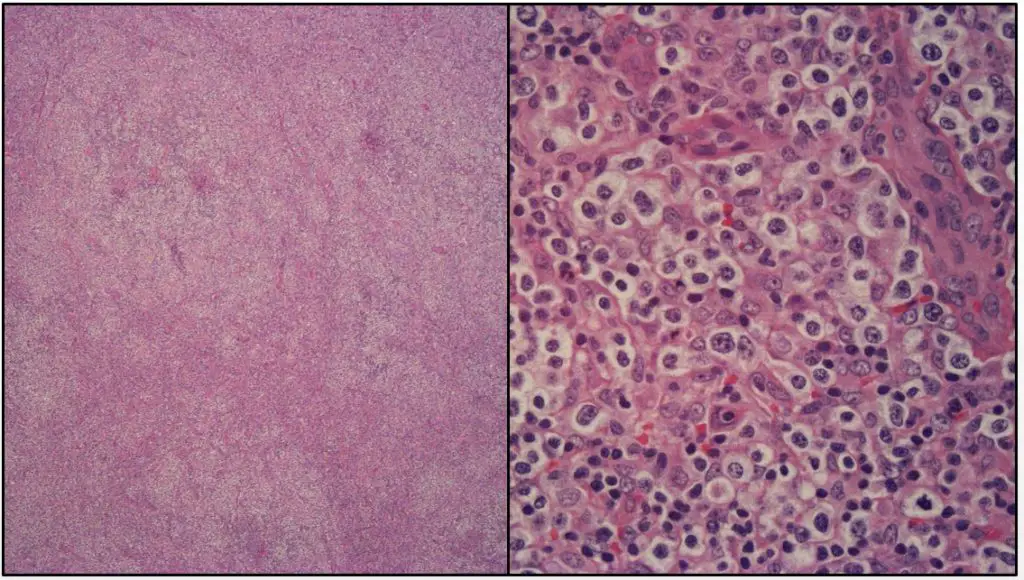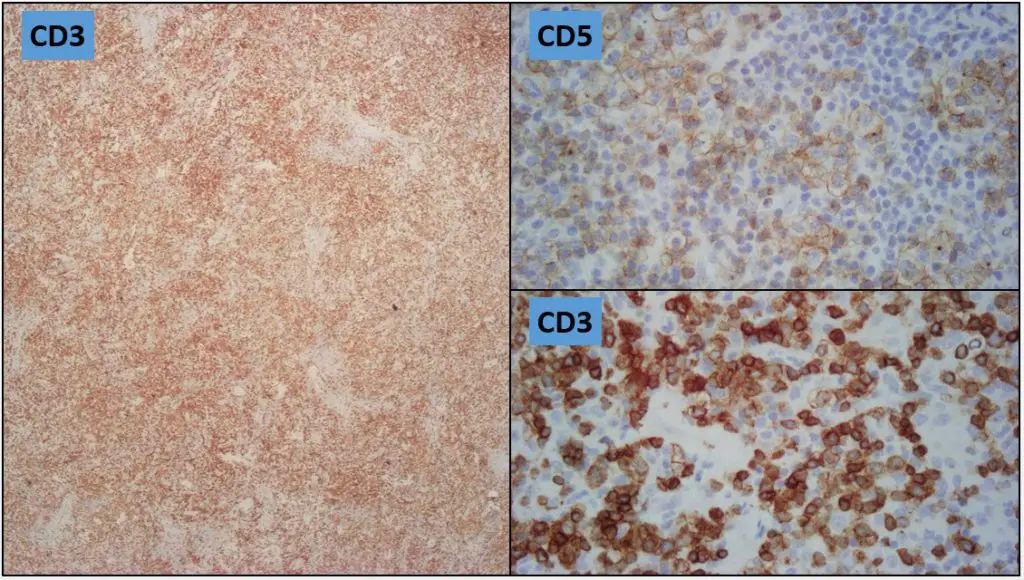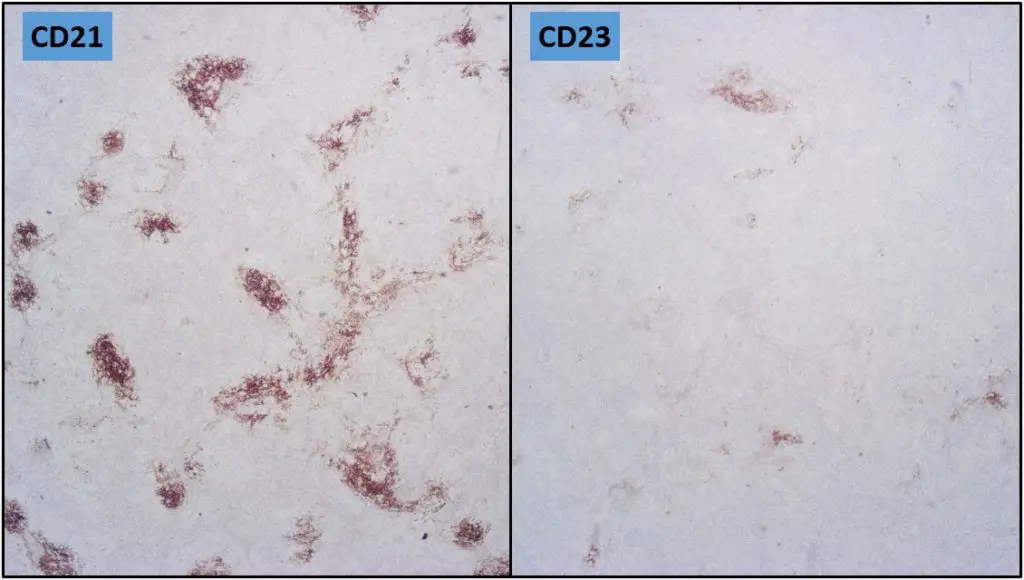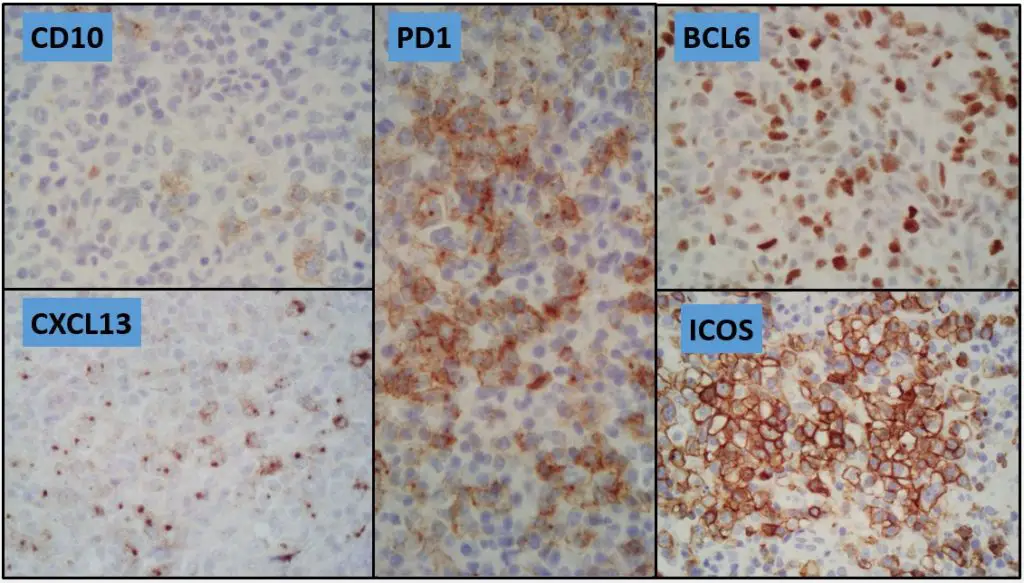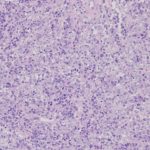Angioimmunoblastic T-cell lymphoma is a peripheral T-cell lymphoma characterized by systemic disease, a polymorphous infiltrate involving lymph nodes and a prominent proliferation of high endothelial venules and follicular dendritic cells.
What is the Pathology of Angioimmunoblastic T-Cell Lymphoma?
The pathology of angioimmunoblastic T-cell lymphoma is:
-Etiology: The cause of angioimmunoblastic T-cell lymphoma is dysregulation of the follicular T-helper-cell leading to germinal center anarchy and development of the lymphoma.
-Genes involved: TET2, DNMT3A, IDH2, RHOA, CD28, PLCG1, TNFRSF21.
-Pathogenesis: The sequence of events that lead to angioimmunoblastic T-cell lymphoma include an initial reaction of an unbalanced immune response to an unknown antigen followed by an oligoclonal phase driven by persistence and ineffective handling of the primary and initial stimulus
-Histology: The histology associated with angioimmunoblastic t-cell lymphoma shows partial effacement of lymphonodular architecture, perinodal infiltration with preservation of subcapsular and trabecular sinuses. There are also predominantly paracortical aggregates of polymorphic small to medium sized cells with clear/pale cytoplasm, distinct cell membranes and minimal cytologic atypia. Bone marrow involvement may contain polymorphous infiltrates of lymphocytes, neutrophils, histiocytes and eosinophils along with vascular proliferation with prominent endothelial cells and fibroblasts.
How does Angioimmunoblastic T-cell Lymphoma Present?
Patients with angioimmunoblastic T-cell lymphoma typically present with no gender predisposition with a median age of 65 years. The symptoms, features, and clinical findings associated with angioimmunoblastic T-cell lymphoma include fever, night sweats, weight loss, generalized lymphadenopathy, hepatosplenomegaly and skin rash. Polyclonal hypergammaglobulinemia and autoimmune hemolytic anemia may develop with progression.
How is Angioimmunoblastic T-cell Lymphoma Diagnosed?
Angioimmunoblastic T-cell lymphoma is diagnosed mainly by excisional biopsy of an affected lymph node. Testing for clonal T-cell receptor rearrangement may be helpful.
How is Angioimmunoblastic T-cell Lymphoma Treated?
Angioimmunoblastic T-cell lymphoma is treated with anthracycline containing regimens. Consolidative autologous transplantation may be considered. Studies show that romidepsin, belinostat, brentuximab, vedotin and lenalidomide are effective in pretreated patients.
What is the Prognosis of Angioimmunoblastic T-Cell Lymphoma?
The prognosis of angioimmunoblastic T-cell lymphoma is fair because it has a moderately aggressive course with occasional spontaneous remissions with a median survival of 24 months. Five year overall and failure free survivals were 33% and 18% respectively.


